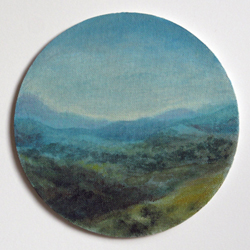When the winner of the Best Film category is announced at tomorrow night’s Bafta awards ceremony in London, there’s a strong possibility it will be a literary adaptation. Of the five films in contention, three are based on novels: Tinker Tailor Soldier Spy (adapted from John Le Carré’s classic cold war thriller), The Descendants (from Kaui Hart Hemmings’ 2007 acclaimed debut) and The Help (based on Kathryn Stockett’s wildly popular novel about African-American maids in 1960s Mississippi). Later this month at the Oscars, six of the nine nominees for Best Picture are adaptations.
Adapting works of literature for the cinema is not new. Breakfast at Tiffany’s(1961), Doctor Zhivago (1965), The Godfather (1972) and The English Patient(1996) are just a handful of the great films that began life as novels. But 2012 is shaping up to be a particularly busy year. Next weekend sees the British release of one of those Oscar contenders, Extremely Loud and Incredibly Close, directed by Stephen Daldry, based on the novel by Jonathan Safran Foer and starring Sandra Bullock and Tom Hanks. In the coming months it will be followed by the film of Paul Torday’s bestselling 2007 novel Salmon Fishing in the Yemen, with Ewan McGregor and Emily Blunt, and big screen adaptations of Yann Martel’s Booker-winning Life of Pi and David Mitchell’s Cloud Atlas as well as interpretations of older classics such as Great Expectations, The Hobbit, The Great Gatsby and Anna Karenina.
It’s unlikely that all of these films will be classics. One common criticism of films of popular novels is that they are “not as good as the book”. So why do so many filmmakers still believe it pays to reach for well-loved novels rather than search for original screenplays? According to Tim Bevan, co-chairman of Working Title Films, which has produced a string of big literary adaptations including Bridget Jones’s Diary (Helen Fielding) and Atonement (Ian McEwan), and which was behind last year’s Tinker Tailor Soldier Spy, the key factors are ideas and money – and both are currently in short supply. “We’re not in a great period for cinema at the moment,” says Bevan. “There is a paucity of ideas, properly cinematic ideas. One of the reasons for that is that those that invest are playing it safe and that’s because of the economic world we live in and because the economics of the movie business have changed considerably recently.” The past year has seen a dramatic decline in revenues, largely owing to falling DVD sales. As this revenue stream dries up, big studios are making fewer movies.
In a relatively impoverished film landscape, it is tempting to assume adaptations represent a less expensive option than a film created from an original idea and script. Not so, explains Lesley Thorne who, as director of Film and TV Rights at the literary agency Aitken Alexander Associates, sold the rights for the recent BBC TV adaptation of Sebastian Faulks’ Birdsong. “It’s more expensive to buy a novel because you have to pay for the underlying rights to a book and then you have to pay someone to adapt it,” she says. “Sometimes you’re talking about twice the cost.” This, of course, doesn’t apply to adaptations of out of copyright classics, which may partly explain the attraction of remaking books by authors such as Tolstoy and Dickens.
In the UK, producers and financiers tend to secure an option to film a novel – usually for two consecutive 18 month periods – for between £5,000 and £20,000 per period. Producers taking on a big novel by a famous writer will often want to get a similarly big name screenwriter to adapt – someone such as Christopher Hampton (Atonement) or Tom Stoppard (Empire of the Sun). While a first-time screenwriter might expect to get between £10,000 and £20,000 for a first draft, a more experienced writer could receive £40,000. A writer of Stoppard’s reputation, rather more.
When a director starts shooting, the author is paid a purchase price, usually between 2 and 2.5 per cent of the film’s overall budget, according to an industry insider. On average this will be around £200,000. Contracts often include “back-end” deals that take into account additional factors such as profit share, though most films never officially make a profit.
So if adaptations can actually be more expensive than original screenplays, why do producers take them on? “When you make a movie based on a book you’ve got that head start,” says Bevan. Audience recognition of the story or author behind it means that a movie is already part of the cultural conversation, he adds, pointing to Tinker Tailor Soldier Spy. “At least 50 per cent of people who saw that film had probably also seen the mini series” – released in 1979 starring Alec Guinness as George Smiley – “and read the book but were ready for a movie as well.”
Working Title is currently producing a new Bridget Jones movie (Bridget Jones’s Baby, due for release next year) as well as adaptations of Victor Hugo’s Les Miserables and Tolstoy’s Anna Karenina. Bevan says that investors will always look at the whole package – script, actors and director. But a novel gives them a bit of confidence. “They feel, ‘Oh yeah, that’s safe because it’s worked before,’ which is not the most imaginative way to go and may well be a fault of cinema today,” he says.
Independent filmmaker Rob Heydon first met the author Irvine Welsh, best-known for Trainspotting, his 1993 novel about a group of lovable heroin addicts, 12 years ago. The pair discussed the possibility of adapting Ecstasy, Welsh’s 1996 book of three stories, and Heydon recalls that between 2002 and 2010 he “had financing in place about 10 times”. The film, however, was not made until 2011 and will be released in April. Would it have been even harder to make happen without Welsh’s name attached? “I think so, definitely,” says Heydon. “Trainspotting was a very successful film and it sold around the world. His follow up [The Acid House] was a bunch of short stories that Film Four amalgamated into a feature and sold to 28 different countries. It made it a lot easier to show the commercial viability of another film based on one of his books.”
An alternative theory is offered by Stephen Daldry, who has directed three adaptations: The Hours (from Michael Cunningham’s novel), The Reader (from Bernhard Schlink’s) and Extremely Loud and Incredibly Close. He suggests that we could actually be witnessing the end of producers’ and financiers’ willingness to invest in literary adaptations. “There’s a retraction and a fearfulness, given the change in the marketplace, to do with the digital revolution and the collapse of DVD sales,” he says. “The films that are being made now were green-lit years ago. I’m not sure they’d be made now.”
Daldry explains that in the past six to 12 months there has been a huge decline in the number of films being made because money is tight. If film executives need to make money, it is unlikely they will go for relatively expensive prestige literary projects over sequels or more mainstream crowd-pleasers.
What’s more, he argues, the idea that a film adaptation brings with it a ready-made audience of those who loved the book only goes so far. “The chances are that the number of people who read the book would fill a restaurant,” he argues. “Unless it’s Harry Potter and a brand in itself, you can’t guarantee that making a film of a more high-end novel will translate into a popular audience.”
Even so, the desire for “hot property” books with a literary cache – even if readership figures aren’t huge – means that, according to one insider, big producers will often pay publishing assistants for an early copy of the next big thing so they can snap up rights even before publication.
“I think in the States they have a slightly different attitude towards books,” says Thorne. “It’s much more to do with how hot a book or an author is and whether that book is in the bestseller list. I don’t think that many books in the US market get optioned simply because they’re fantastic stories, whereas I feel that British producers and financiers are much more open to optioning books that don’t necessarily have bestseller track records.” Two films from 2006 illustrate this contrast: The Last King of Scotland, based on Giles Foden’s sleeper debut novel and adapted by a small independent UK production company, and The Devil Wears Prada, Lauren Weisberger’s bestselling novel based on her time working at Vogue, which was turned into a film by the Hollywood studio 20th Century Fox.
Once a film is released, literary adaptations, unlike original screenplays, can offer cross-promotional possibilities that are hard to ignore. With Ecstasy, says Heydon, Irvine Welsh’s publisher Random House “is promoting the book and the film and we’re promoting the film and the book”. Also, Ecstasy is appearing just a couple of days after the publication of Welsh’s new novel, Skagboys, which is written as a prequel to Trainspotting. There will be film tie-in editions ofEcstasy, poster campaigns for the book and the film and interviews with Welsh in the media, all of which helps to generate the elusive “buzz” a film needs to survive – and make money.
Even for the safest-looking adaptations this is no easy task. Susan Hill’s gothic ghost story The Woman in Black was published in 1983. It was adapted for the stage in 1987 (and is the second longest running West End play after The Mousetrap). It was also made into a TV drama in 1989. Last weekend the film of The Woman in Black opened in the US, taking $20.9m at the box office. Yet consider that the film, which stars Daniel Radcliffe of Harry Potter fame, had a budget of $13m and was backed by a US marketing campaign reported to have cost around $14m. It opens in UK cinemas this weekend.
. . .
So what determines whether an adaptation is successful? James Watkins, director of the latest The Woman in Black, believes it would be a mistake to simply copy what previous adaptations have done. “They all work in different ways,” he says. “You have different storytelling weapons in your armoury. You need to evaluate in some way what it is people respond to in the book, the core values.”
Daldry, whose adaptations have been of novels that would not obviously translate to film, offers an even clearer distinction: “I was not making a film of the book but a film of the story. They exist in entirely different spheres.”
Literary purists may regard adaptations as a “bad thing”, but it seems there are some stories so powerful and with which we connect so readily that we never tire of reading or watching them. This year sees a particular trend for adaptations of some of literature’s best-loved “classics”. The Great Gatsby will get the Baz Luhrmann treatment with Leonardo DiCaprio as Jay Gatsby and Carey Mulligan as Daisy Buchanan; JRR Tolkien’s The Hobbit becomes the nextThe Lord of the Rings, as Peter Jackson adapts this prequel with Martin Freeman playing Bilbo Baggins. With Gatsby, a classy adaptation already exists, starring Robert Redford and Mia Farrow. But that 1974 version looks dated; film language and technology has changed and anyway, the filmmakers would argue, we need a Gatsby for our age, one that speaks to the current concerns about wealth and poverty and a world in flux.
One of the most adapted classic novels of all time is Tolstoy’s Anna Karenina. It’s had more than six major adaptations, including a Russian mini-series, says Tim Bevan of Working Title. Why, then, is he bothering to make a new version? The idea, he explains, took hold on the set of Atonement when Keira Knightley was reading the Tolstoy novel and said she thought it would make a good film. Bevan and the director Joe Wright asked the playwright Tom Stoppard whether he thought Anna Karenina would work as an adaptation and he reread the novel and watched all the previous versions before, says Bevan, declaring, “that none of them got it right”. “When it’s Stoppard saying that you know you’re on to something,” he says.
Ultimately, the trend for adaptations exists because, give or take the inevitable exceptions, it works. Investors can make money from adaptations because audiences enjoy them. Where one story is a demonstrable hit, filmmakers are keen to follow up with something similar, or even the same (Stieg Larsson's The Girl With the Dragon Tattoo has spawned two film versions in just a couple of years). The success of Harry Potter led to a scramble for “the next Harry Potter” – that turned out to be Stephenie Meyer's Twilight series. With that multi-million dollar franchise now at a close “the next Twilight” (or “the next-next Harry Potter”) is Suzanne Collins’ The Hunger Games. The first film is out in March and a crossover audience is expected for this young adult trilogy: expect to see office workers devouring it on the commute to work.
Is this laziness on the part of filmmakers? Or commercial expediency? Perhaps it’s simply to do with the form; a novel will always offer a greater depth of characterisation and more subtlety in its themes. And having a novel as well as a script allows actors to tap into a wealth of backstory and subtext that you’d be hard pressed to find in a 120-page script. Economic conservatism may be playing its part but, as Thorne says: “It’s mainly to do with truly compelling storytelling, and novelists are fantastic storytellers.”
.......................................................................
From book to the big screen: David Mitchell on turning his novel ‘Cloud Atlas’ into a film
“With adaptations, I think the trick is to resist the temptation to compare them on a single ‘Enjoy-o-meter’,” says David Mitchell, author of Cloud Atlas (2004), which is due for release later this year starring Tom Hanks, Halle Berry and Hugh Grant.
Cloud Atlas was optioned in 2005 by the filmmakers Andy and Lana Wachowski and Tom Twyker. “If the makers of theMatrix trilogy and Run Lola Run wanted to film a novel you had written,” says Mitchell, “how long would you agonise over the decision?”
The book is an elaborately structured Russian doll of a novel, featuring books within books within books that cross time and space. What was it like handing over such a carefully wrought work to filmmakers who would undoubtedly take some liberties? “I don't really feel that the story has been altered to please a broader audience,” says Mitchell, “rather, it has been disassembled and reassembled in order to make the story work in film format, and to play to the strengths of cinematic storytelling. The book's semi-hidden reincarnation motif, for example, is brought into the film's foreground by using the same actors playing different characters (genders and ethnicities) in different time-zones – the clear implication being that they are the same souls in different bodies. I’d feel differently if travesties had been committed, but in my opinion that hasn't happened here. Seeing the interpretations they've come up with, and just standing back and thinking ‘God, that's ingenious’ has been an enormous, ticklish pleasure.”
Mitchell met with the filmmakers in 2009 to discuss their plans and since then, bar a visit to the set, has been “a fascinated spectator”.
While the filmmakers have adopted what Mitchell describes as a “mosaic structure”, they’ve also had an impact beyond the adaptation itself. The film gives one of the novel’s characters, a publisher called Cavendish, a “slightly warmer ending” than the novel suggests.
“As Cavendish also appears in the new novel I'm working on,” says Mitchell, “I'm going to weave his film ending into the character's personal history and make it ‘canonical’. Many a lonely novelist has a secret longing for like-minded collaborators.”
There will no doubt be some for whom the book is better than the film, but Mitchell is open-minded: “Wouldn’t it be perverse to stick doggedly to aspects of the book for the sake of ‘authenticity’ if that authenticity then kills the film?”







